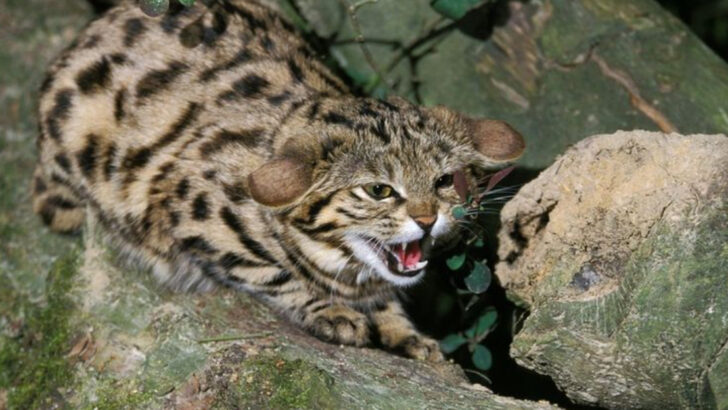They may look like house cats, but these little predators are anything but cuddly.
With razor-sharp claws, lightning-fast reflexes, and a hunting instinct that never quits, these small but deadly felines rule their territories with an iron paw. Some are solitary assassins, others work in stealthy silence, and a few have venomous bites that can take down prey twice their size.
Forget lions and tigers—these fierce little hunters are the real kings of the wild. From the nearly invisible black-footed cat to the eerily efficient serval, they prove that size has nothing to do with danger.
Think twice before underestimating them. These 17 small cat breeds pack enough power to remind the world why felines have ruled the animal kingdom for millennia.
Black-footed Cat
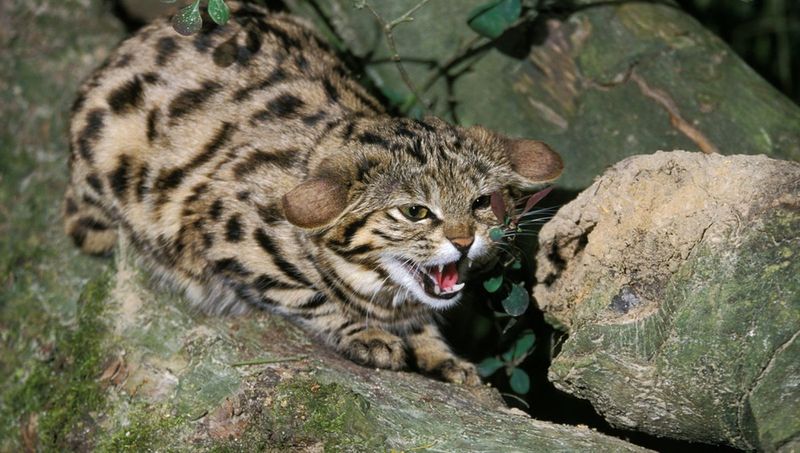
The black-footed cat, despite its small size, is one of the most ferocious hunters. Native to the African savanna, this little feline relies on its black paws for stealth and agility. Weighing less than five pounds, its hunting success rate surpasses even that of the larger, more iconic cats.
This nocturnal predator is relentless, catching prey nightly. It boasts a striking sandy coat that helps it blend seamlessly into its surroundings. Known for its solitary nature, the black-footed cat is a master of survival. Its fierce demeanor and prowess make it a formidable creature of the wild.
Rusty-spotted Cat
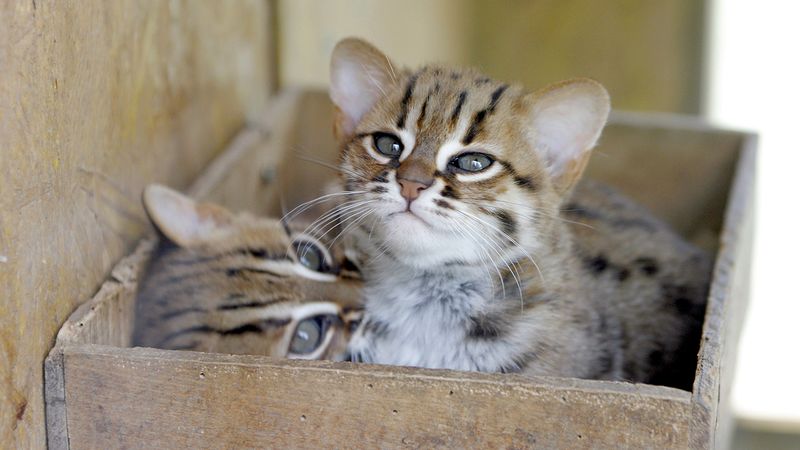
The rusty-spotted cat is one of the smallest wild cats, native to India and Sri Lanka. Its bright, rusty-colored coat, adorned with spots, offers excellent camouflage in forested habitats. Despite its small stature, this cat is a skilled climber and hunter.
Primarily nocturnal, it preys on insects, birds, and small mammals. Its agile nature allows it to navigate both ground and trees with ease. This diminutive feline’s endearing appearance masks a fierce independence. Though elusive, its presence is vital to the ecosystem, controlling pest populations and maintaining balance in its habitat.
Sand Cat
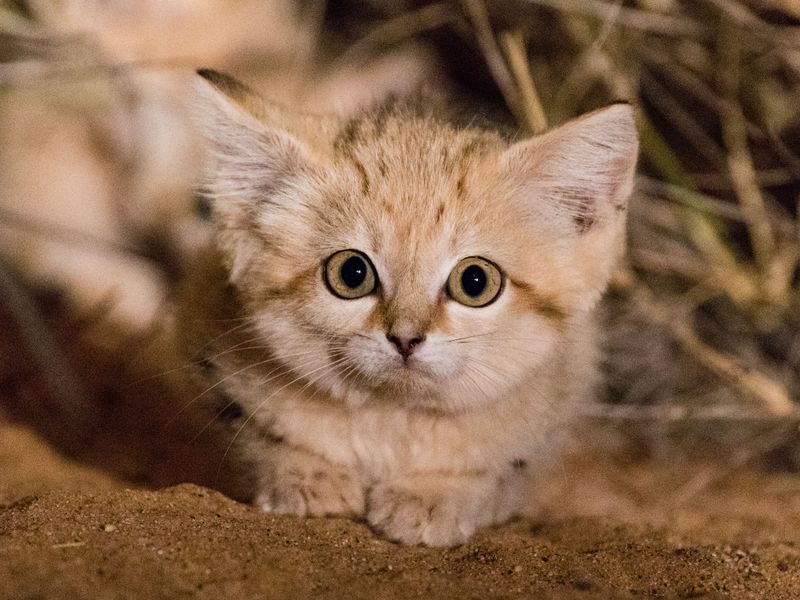
Resilient and resourceful, the sand cat thrives in harsh desert environments across the Middle East and Africa. Its sand-colored fur and wide eyes are perfectly adapted for nocturnal life in arid lands. This feline’s ability to survive without water for months is remarkable.
Its diet includes rodents and insects, which it hunts with precision. Known for its playful yet solitary nature, the sand cat’s thick fur protects it from extreme temperatures. It exhibits a remarkable ability to blend into its surroundings, making it an efficient predator. Despite its harsh habitat, the sand cat remains a survivor.
Pallas’s Cat
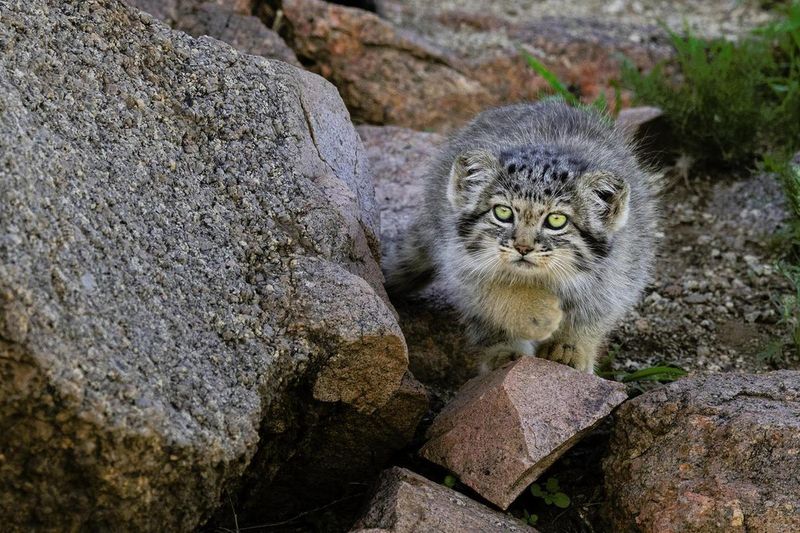
The Pallas’s cat, or manul, resides in the snowy steppes of Central Asia. Its grumpy expression and thick, fluffy coat make it a distinctive presence. Adapted to cold climates, its fur is among the densest of all cats.
This elusive feline’s behavior is as unique as its appearance. It hunts primarily during the twilight hours, using the rocks and grass as cover. The Pallas’s cat’s slow, deliberate movements aid its ambush techniques. Despite its small size, it boasts an impressive ability to capture prey in rugged terrains. Its fluffy charm conceals a skilled and stealthy hunter.
Fishing Cat
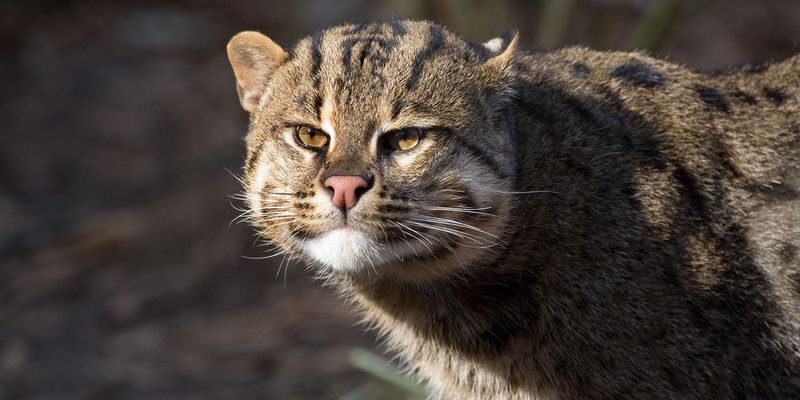
The fishing cat, native to Southeast Asia, thrives in wetland habitats. Its webbed feet and dense coat make it a natural swimmer. Unlike many cats, it hunts in water, preying on fish and crustaceans.
This feline’s keen eyesight and patience enable it to catch slippery prey. Its spotted fur offers camouflage among riverbanks and marshes. Solitary by nature, the fishing cat is both a formidable hunter and an essential part of its ecosystem. Adapted to life in watery environments, it bridges the gap between terrestrial and aquatic worlds, showcasing remarkable hunting skills.
Margay
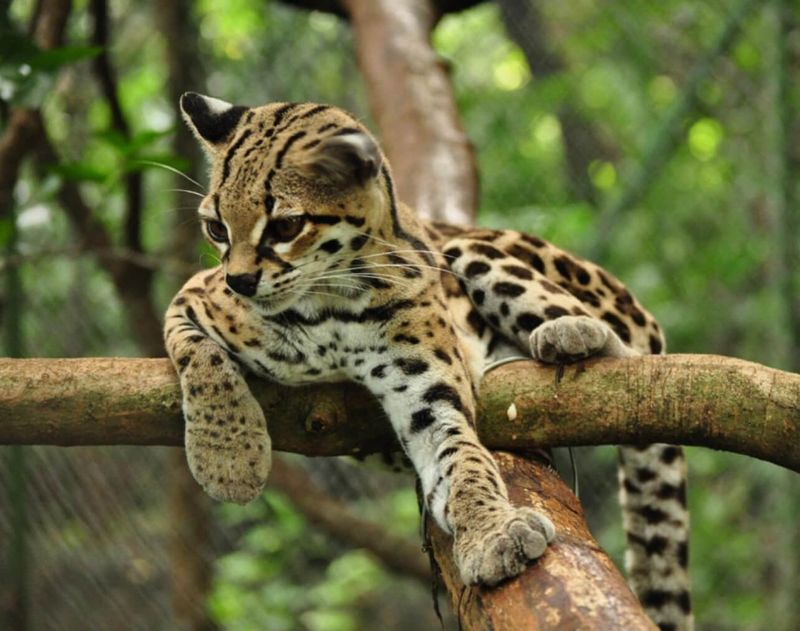
The margay, a master of the treetops, inhabits the rainforests of Central and South America. Its large eyes and agile frame make it an expert climber. Known for its nocturnal habits, it moves silently through the canopy.
This feline’s spotted coat provides perfect camouflage amidst leaves and shadows. Its hunting skills are unparalleled, catching birds and small mammals with ease. The margay’s remarkable ability to mimic bird calls aids its stealth. Its solitary lifestyle and arboreal prowess make it a fascinating and formidable predator in its lush habitat, embodying the wild spirit of the rainforest.
Oncilla
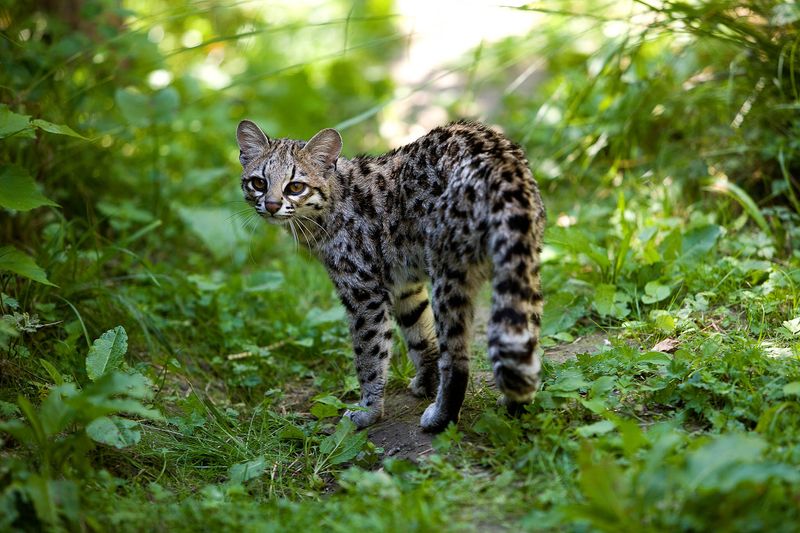
The oncilla, or little spotted cat, is native to South America’s forests. Its golden coat, patterned with rosettes, is not just beautiful but an evolutionary advantage for blending with the forest floor.
Primarily nocturnal, the oncilla is a stealthy hunter, preying on small animals and insects. Despite its elusive nature, it plays a crucial role in controlling prey populations. Its delicate build and keen senses make it adept at navigating dense underbrush. The oncilla’s enchanting appearance belies its ruthless efficiency as a predator, making it a vital part of its ecological community.
Serval
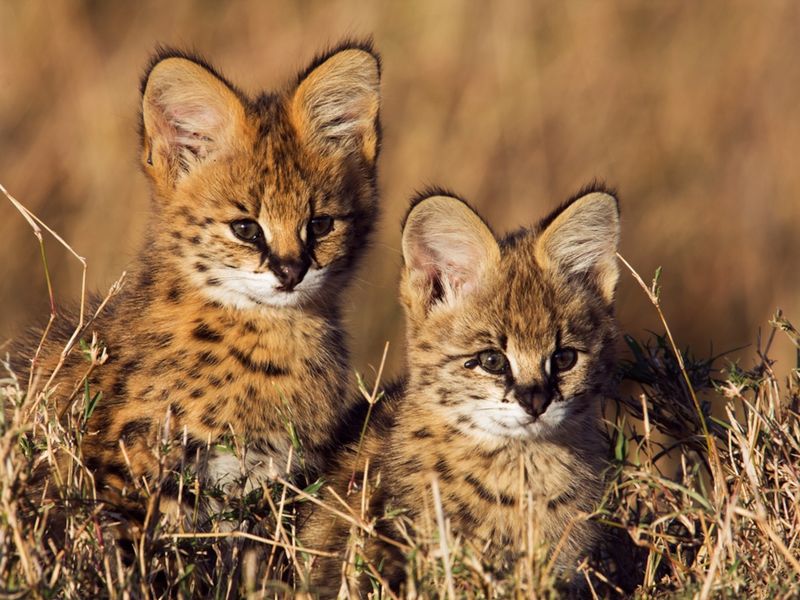
The serval, with its tall, slender build and large ears, is a striking presence in sub-Saharan Africa’s grasslands. These adaptations make it an exceptional hunter, capable of detecting the slightest sound.
Its golden coat, adorned with spots and stripes, provides ideal camouflage among grasses. The serval’s high jump is legendary, allowing it to catch birds mid-flight. This solitary feline uses a combination of stealth and power to pursue prey. Despite its graceful appearance, the serval is a formidable predator, embodying the elegance and power of Africa’s wilds.
Jungle Cat
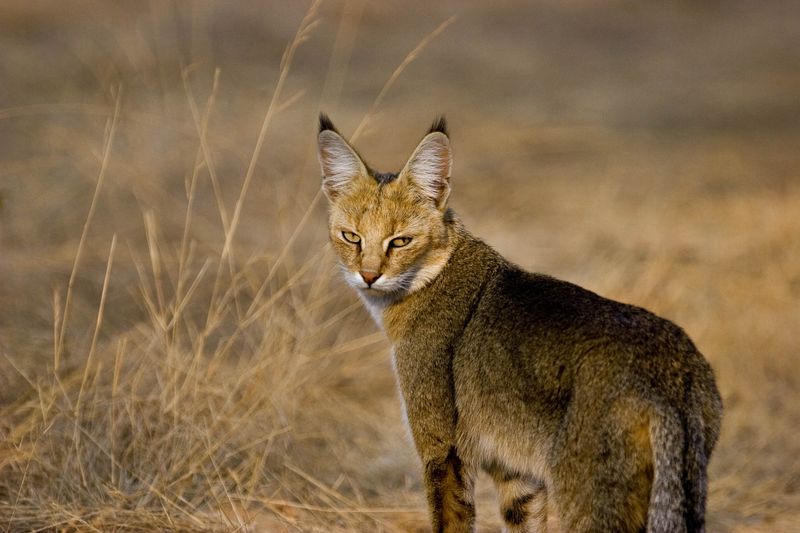
The jungle cat, with its tufted ears and tawny coat, inhabits wetlands and forests of the Indian subcontinent and Southeast Asia. Its adaptability to various environments is remarkable.
A solitary predator, it hunts small mammals and birds with agility and precision. The jungle cat’s large territories and elusive nature make it a fascinating study. Despite its name, it thrives near human settlements, often coexisting with agricultural landscapes. Its ability to adapt to diverse habitats underscores its resilience, making the jungle cat a symbol of versatility and survival.
Flat-headed Cat
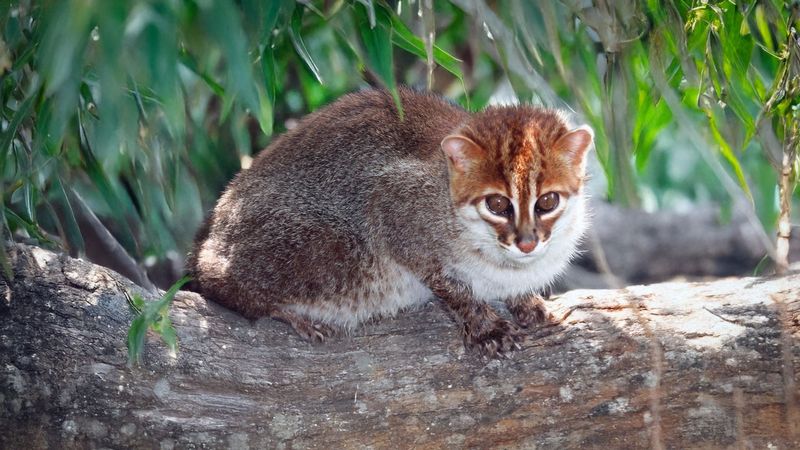
The flat-headed cat, native to the wetlands of Southeast Asia, is an unusual and rare feline. Its flattened head and elongated body are unique adaptations for hunting in waterlogged environments.
This nocturnal predator specializes in catching fish and frogs, relying on its keen eyesight and stealth. The flat-headed cat’s webbed feet and sleek coat enhance its swimming ability. Its reclusive nature and specialized diet make it vulnerable to habitat loss. Efforts to protect its environment are crucial for its survival. This intriguing species embodies the delicate balance of life in Southeast Asia’s rainforests.
Andean Mountain Cat
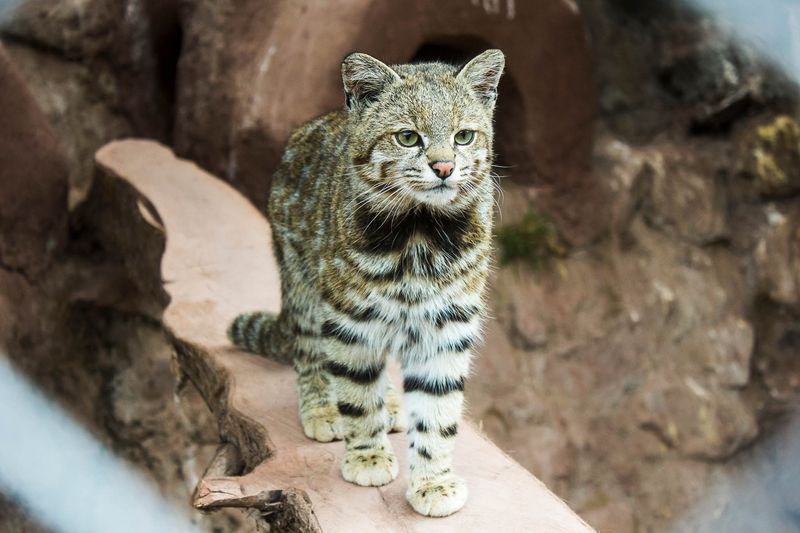
The Andean mountain cat is a rare and elusive species found in the high Andes of South America. Its thick, grayish coat and bushy tail are perfect for the cold mountain climate.
This small cat is a solitary hunter, preying on birds and small mammals in the rugged terrain. Its habitat is among the least disturbed, yet its population is vulnerable. Conservation efforts focus on preserving this unique environment. The Andean mountain cat, with its ghostly presence and high-altitude adaptability, remains a mysterious and captivating figure in the Andean highlands.
Kodkod
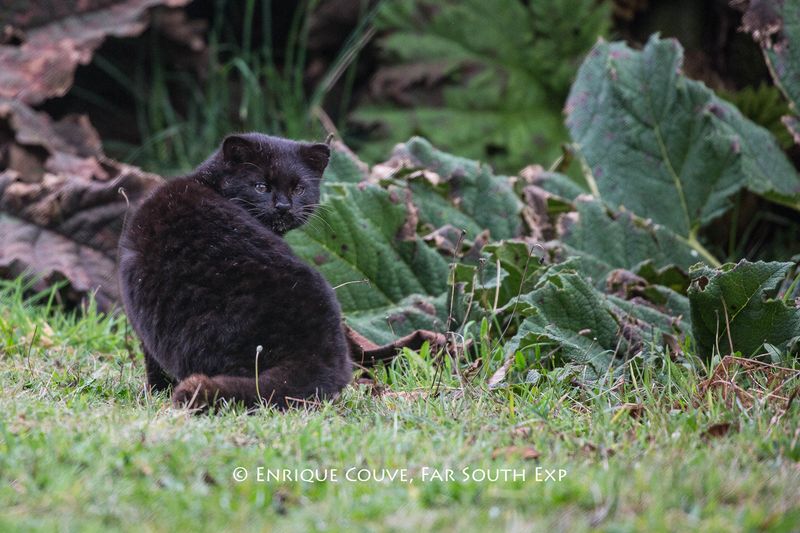
The kodkod, the smallest wild cat in the Americas, inhabits the temperate rainforests of Chile and Argentina. Its small size and spotted coat make it a master of camouflage.
Primarily nocturnal, the kodkod hunts birds and small mammals with precision. Its habitat is under threat from deforestation, making conservation efforts critical. Despite its size, it is a vital predator within its ecosystem, maintaining balance by controlling prey populations. The kodkod’s elusive nature and adaptability highlight the intricate web of life within South America’s forests, serving as a reminder of the importance of preserving biodiversity.
Iriomote Cat
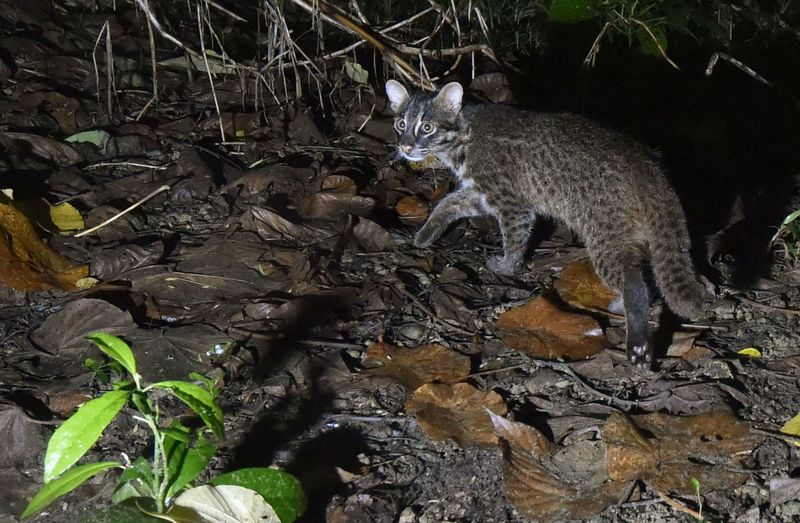
The Iriomote cat, found only on Japan’s Iriomote Island, is a rare and endangered species. Its dark, mottled coat provides excellent camouflage in its jungle habitat.
Adapted to both land and water, it preys on birds, reptiles, and crustaceans. A solitary hunter, the Iriomote cat’s survival is challenged by habitat destruction. Its elusive nature makes it difficult to study, yet it remains a symbol of the island’s unique biodiversity. Conservation efforts are crucial to ensure its continued existence. The Iriomote cat embodies the fragility and beauty of island ecosystems.
Chinese Mountain Cat
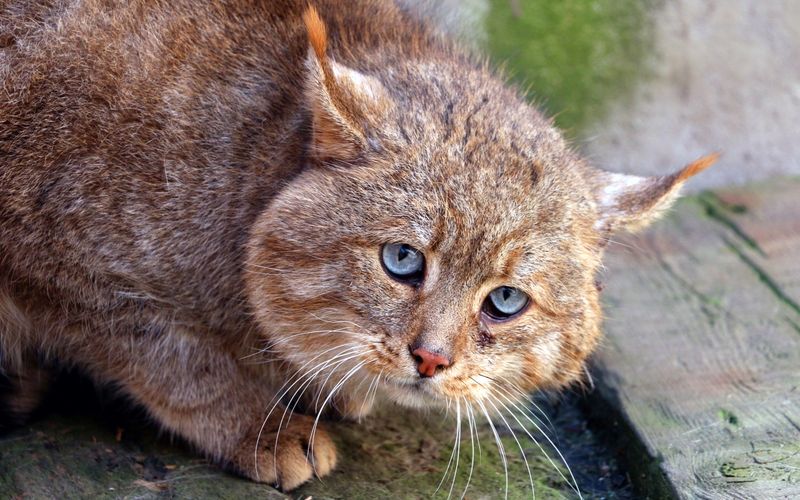
The Chinese mountain cat, native to the Tibetan Plateau, is shrouded in mystery. Its dense, pale coat and tufted ears are well-suited for the cold, rugged terrain.
This elusive feline is a solitary hunter, preying on pikas and rodents. Little is known about its behavior due to its remote habitat and secretive nature. Conservationists strive to learn more about the Chinese mountain cat to protect its dwindling population. Its presence in the harsh landscape symbolizes the resilience of wildlife in extreme environments, making it a subject of fascination and concern for researchers.
Bay Cat
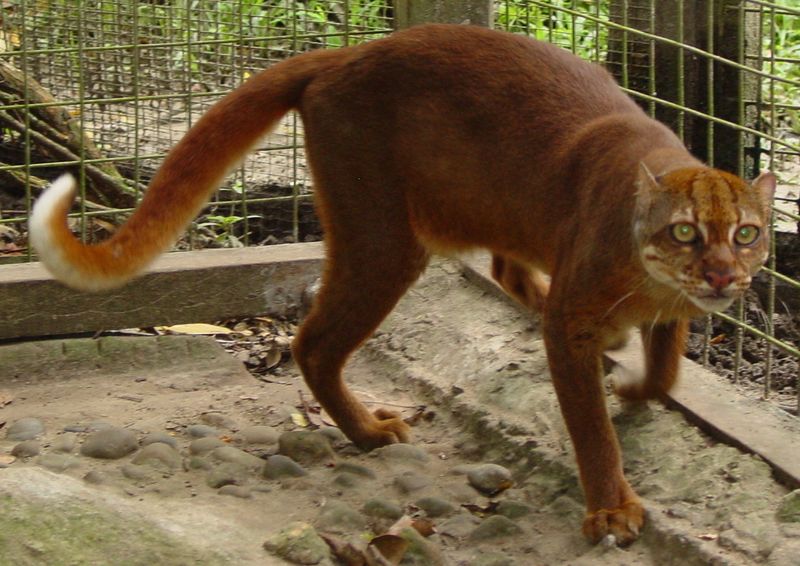
The bay cat, native to Borneo, is one of the least understood wild cats. Its reddish-brown coat blends flawlessly with the rainforest’s shadows.
This rare feline is a solitary and elusive hunter, preying on small mammals and birds. The bay cat’s secretive lifestyle makes it difficult to study. Conservationists prioritize its habitat preservation to prevent further decline. Despite its mysterious nature, the bay cat plays a crucial role in its ecosystem. Its existence highlights the rich biodiversity of Borneo and the need for continued conservation efforts to protect these unique species.
Marbled Cat
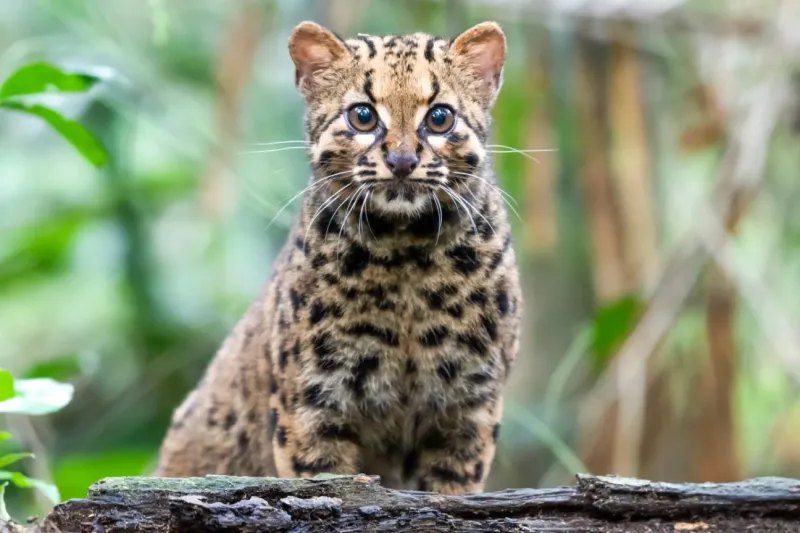
The marbled cat, found in Southeast Asian rainforests, is known for its striking marbled coat resembling a miniature clouded leopard. This arboreal feline is an adept climber, moving effortlessly through the trees.
Its unique fur pattern provides camouflage in the dappled sunlight, aiding its hunting prowess. The marbled cat preys on birds and small mammals, using stealth and agility. Its elusive nature and rainforest habitat make it a rare sight. Conservation efforts focus on preserving its environment. The marbled cat’s beauty and mysterious lifestyle continue to captivate those who study it.
Geoffroy’s Cat
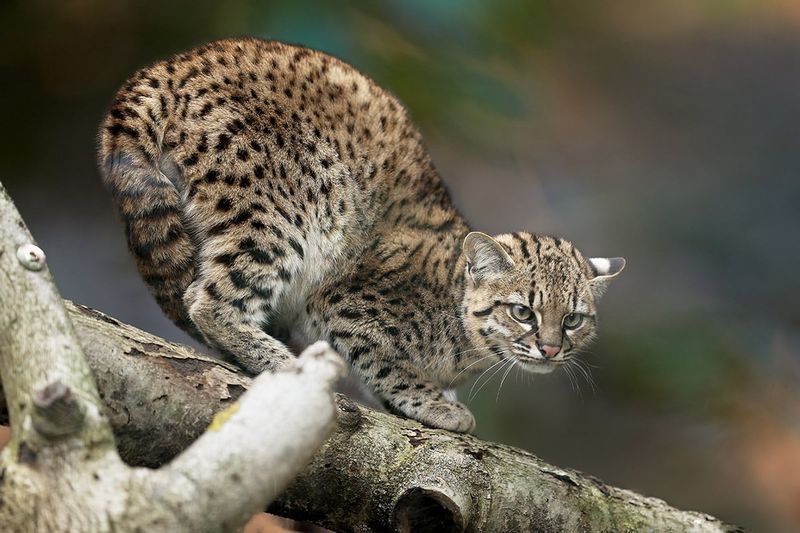
Geoffroy’s cat, native to the grasslands and forests of South America, is a versatile and adaptable feline. Its spotted coat is perfect for blending into diverse environments, from open fields to dense forests.
This small cat is nocturnal, hunting rodents and birds with keen precision. Despite its adaptability, habitat destruction poses a threat. Conservation efforts are vital to ensure its survival. Geoffroy’s cat’s ability to thrive in various landscapes underscores its resilience. Its presence in South America’s ecosystems plays a critical role in maintaining ecological balance, making it a species of interest and concern.

